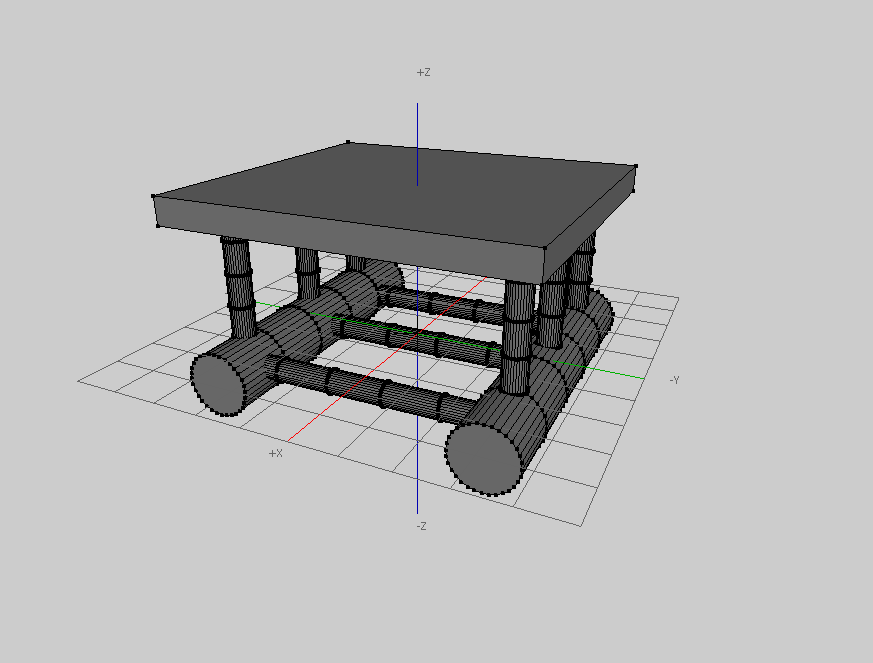Difference between revisions of "Semi-submersible"
| (3 intermediate revisions by 3 users not shown) | |||
| Line 2: | Line 2: | ||
"These platforms have legs of sufficient buoyancy to cause the structure to float, but of weight sufficient to keep the structure upright. Semi-submersible rigs can be moved from place to place; can be ballasted up or down by altering the amount of flooding in buoyancy tanks; they are generally anchored by with chain, wire rope and/or polyester rope during drilling operations, though they can also be kept in place by the use of dynamic positioning. Semi-submersibles can be used in water depths from 200 to 10,000 feet (60 to 3,050 m)." | "These platforms have legs of sufficient buoyancy to cause the structure to float, but of weight sufficient to keep the structure upright. Semi-submersible rigs can be moved from place to place; can be ballasted up or down by altering the amount of flooding in buoyancy tanks; they are generally anchored by with chain, wire rope and/or polyester rope during drilling operations, though they can also be kept in place by the use of dynamic positioning. Semi-submersibles can be used in water depths from 200 to 10,000 feet (60 to 3,050 m)." | ||
| + | |||
| + | The small waterline area means that its movement can get out of phase with the waves. So even with 40 foot clearance above the water a 15 foot wave might cause problems. So they need lots of clearance both above and below water, so there is a minimum size structure that can work for certain wave height assumptions. So it does not scale down well. | ||
| + | |||
| + | Typical oil platforms are tied to the bottom of the ocean so they do not move up and down, so they don't get out of phase with the waves. This type of semi-submersible is called a [http://en.wikipedia.org/wiki/Tension-leg_platform tension-leg platform]. In this case 40 feet of clearance is 40 feet of clearance. | ||
| + | |||
| + | [[Image:SemiSubmersable.PNG]] | ||
| + | |||
| + | ==See also== | ||
| + | [[Submersible]] | ||
| + | |||
| + | {{Structure Designs}} | ||
Latest revision as of 10:33, 8 March 2010
From wikipedia
"These platforms have legs of sufficient buoyancy to cause the structure to float, but of weight sufficient to keep the structure upright. Semi-submersible rigs can be moved from place to place; can be ballasted up or down by altering the amount of flooding in buoyancy tanks; they are generally anchored by with chain, wire rope and/or polyester rope during drilling operations, though they can also be kept in place by the use of dynamic positioning. Semi-submersibles can be used in water depths from 200 to 10,000 feet (60 to 3,050 m)."
The small waterline area means that its movement can get out of phase with the waves. So even with 40 foot clearance above the water a 15 foot wave might cause problems. So they need lots of clearance both above and below water, so there is a minimum size structure that can work for certain wave height assumptions. So it does not scale down well.
Typical oil platforms are tied to the bottom of the ocean so they do not move up and down, so they don't get out of phase with the waves. This type of semi-submersible is called a tension-leg platform. In this case 40 feet of clearance is 40 feet of clearance.
See also
| Structure Designs |
|---|
| Structure requirements · PintStead · Spar · Semi-submersible · Submersible · Boats · Collaborative Design · Space Frame · Low Cost Seastead · Conex dumbbell · Docks · |
| Materials |
|---|
| Materials · Thin Shell Ferrocement · Concrete · Geopolymer · Basalt |
| Engineering Data |
|---|
| Low Cost Wave Tank · Scale models · Wind Loads · Seasteading Software |
| Stability & Propulsion |
|---|
| Stability · Propulsion · Station Keeping · Gyroscopes · Stabilizers · Pneumatically Stabilized Platforms · Connections |
